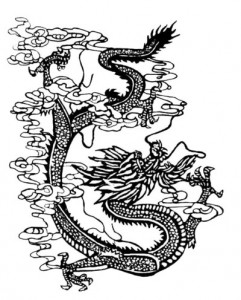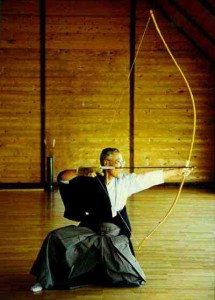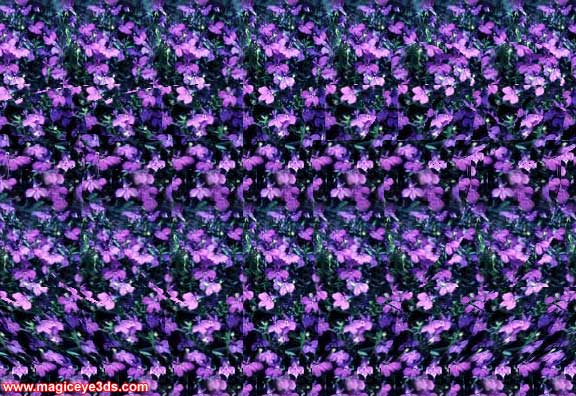 The Dragon’s Gaze
The Dragon’s Gaze
Why you should Not Focus in Combat, a Scientific Explanation
By Stefan Verstappen, Originally published in Black Belt Magazine April 2009
“If you gaze at a single leaf on a single tree, you do not see the other leaves. If you face the tree with no intention and don’t fix your eyes on a single leaf, then you will see all the many leaves. If your mind is preoccupied with one leaf, you don’t see the others, if you don’t set your attention on one, you will see hundreds and thousands of leaves.”
Yagyu Munenori, Book on Family Traditions in the Art of War
One of the most misunderstood words used in martial arts is the word focus. In the dojo and in the sparring ring coaches and teachers can be heard endlessly admonishing their students to ‘focus’. While it sounds like logical advice, is it really? We all think we know what it means and we all think we know how to do it, but what exactly is focus and is that the right thing to do in a combat situation?
I remember my first sparring match at an in-house tournament. I was a yellow belt in Tae Kwon Do and I asked my teacher where I should focus. “Watch his feet” was his answer and this worked relatively well, after all, the rules did not allow a punch to the face. Then when I switched schools and took a style of Karate that allowed hand techniques to the head, I found myself with a fist in my face more often than not. I asked my Karate teacher where I should focus his reply was to watch the opponent’s chest. When I again changed schools and was now studying Kung Fu, which allowed low licks and sweeps, I routinely found myself on my ass with severely bruised shins. It was then that I began to suspect that ‘focus’ might not really be the best advice.
After years of investigation and trial and error, my conclusion is that while ‘focusing’ is essential in many sports such as archery or javelin toss, it is the worst thing you can do in hand to hand combat.
To understand why focus is the wrong thing to do in a fight we need to clarify the meaning of the word focus and how this is accomplished though the mechanism of the eye itself.
What is Focus?
The one out of eight dictionary meanings for the word focus that most closely approximates the meaning understood by martial arts is: the close or narrow attention; concentration.
This meaning seems to imply a cognitive focus, whereby you narrow the range of perceptions flooding into your brain to better ‘concentrate’ on a specific set of signals, such as awareness of internal processes. For example, Beethoven was able to compose music even after he went deaf because he was able to focus on his auditory memory to ‘hear’ the notes internally.
There are many situations in a Dojo where exactly this internal cognitive focus is required. One example is in the learning of Katas or forms. In the early stages of learning a form, internal focus on proprioception (The internal awareness of exactly how your body is positioned at each moment in time) is essential to mastering the postures and movements.[1]
However, in a street fight, using cognitive or meditative focus would be the equivalent of fighting blind.
Which brings us to a second definition of focus: an apparatus used to adjust the focal length of an optical system in order to make an image distinct or clear. In the martial arts, the optical system is the human eye.
 The human eye works much like a camera. Light enters the eye through the cornea, the transparent window covering the front of the eye. The amount of light allowed to enter is controlled by a ring of muscle known as the Iris that acts like the shutter on a camera expanding and contracting to regulate the amount of light through the pupil. It is the pigmentation of the iris that gives the eye its color.
The human eye works much like a camera. Light enters the eye through the cornea, the transparent window covering the front of the eye. The amount of light allowed to enter is controlled by a ring of muscle known as the Iris that acts like the shutter on a camera expanding and contracting to regulate the amount of light through the pupil. It is the pigmentation of the iris that gives the eye its color.
The opening controlled by the iris is called the pupil and appears black. Under dim lighting conditions the pupil will grow larger in order to allow more light to enter, and smaller during bright light to reduce the amount of light. The pupil also reacts to emotional states such as when viewing pleasant things the pupil expands, and vice versa. The pupil allows light to enter the lens that is situated just behind the pupil.
The lens focuses light onto the back of the eye called the retina, which in turn transforms light energy into electrochemical energy that is transmitted to the brain and which we experience as vision.. This is the biological equivalent to photographic film.
Therefore, our second meaning is to focus your eyes to bring maximum clarity to what you are looking at. The human eye is specifically adapted to be able focus on details, but the drawback is that to focus on one thing is to disregard all other things within the visual field. Like the above quote, to focus on one leaf means you cannot see the other leaves. To use a more familiar analogy, one cannot see the forest for the trees
In a combat situation there are numerous facets one should be aware of. In addition to watching for hand and foot techniques, you should also take into account your environment, to look for weapons, hazards, and other attackers. To focus on one area is to not notice the many other events that are equally important.
While our eyes are highly adapted for perceiving colors and details, they also have a second function, the perception of movement throughout the visual field.
To understand how this second function works we have to go back to the anatomical structure of the eye. As we learned, light is focused onto the back of the eye called the retina that transforms the light into the electro-chemical signals. This is accomplished by two types of nerve cells called cones, and rods. The two receptors serve different functions. The cones are more sensitive to color and detail, while the rods are more sensitive to light and movement.
There is a higher concentration of cones in the centre of the retina called the fovea. This concentration of cone receptors allows clearer focus and sensing of detail in the centre of our vision. This is the part of the eye that we use to focus on the figure or object, as opposed to the field or background. The periphery of the retina consists mostly of rods that are not as sensitive to detail but are more sensitive to movement.
In combat, it is movement that you most need to see, the punch or kick heading your way. The anatomy of the eye indicates that in order to better sense movement, the focus of the eye should be diffuse so that more light is directed to the periphery of the retina, the area more sensitive to movement, rather that the centre or focus point. The technique for accomplishing this is called divergent focus or ‘Far Seeing’.
In Far Seeing the eyes focus through and beyond the object you are trying to track. By focusing far away, objects and events nearby will be slightly out of focus allowing more information from the peripheral sense field to be perceived. This improves your ability to track moving objects over a greater area
One way in which we perceive movement is through occlusion. [2] As an object moves through space it blocks or occludes images in the field behind it. (This is why camouflage is effective only if the object does not move.) By un-focusing the centre of vision, the field becomes more prominent. Objects moving within this field are therefore easier to track. If you use the centre of vision to track an object, say a ball being tossed through the air, then the ball would be ‘frozen’ in the centre of focus while the background moves in relationship to the ball. If, however, you focus on the background then the ball would move in relationship to the background, making it easier to notice occlusion and therefore easier to predict trajectory and velocity.
To test this effect, hold out your finger at arm’s length at eye level and focus on your fingertip. Then move your arm and body back and forth while maintaining focus on the finger. Notice that the field rushes past in an incomprehensible blur of color. Now look at a spot in the distance and again swing your outstretched arm in front of you. While you won’t notice the fine details of the finger you are better able to see movement.
Training Methods
In combat, the trick is not to look directly at your opponent, but to look through him. This is known as divergent focus. Slightly un-focus your vision and become more aware of your peripheral field of vision. Details will be a little blurry but movement will be instantly noticeable. Do not cross your eyes. This will also cause a blurring of vision (convergent focus) but not the kind you want. Gaze at your opponents eyes, but don’t stare. By gazing at the eyes you will also be able to detect those tells the eyes give away such as when they quickly glance at your waist before attempting a take down.[3]
It takes practice to learn how to focus this way so do not get discouraged if you find it does not work right away. One reason it may take some time to learn this technique is because of ocular dominance. Just as we are either left handed or right handed, so too do one of our eyes predominate over the other. The dominant eye will tend to focus on an object while the other is slightly unfocused. We do not notice this disparity because our brain automatically compensates for this to create what we think is a clear image.
By allowing your eyes to relax and blur, you override your brain’s automatic compensation and your eyes are less likely to fix at the same point that they normally would. Relaxation is a key ingredient to mastering this technique.
One way to test your ability to master Far Seeing is by looking at auto-stereogram or more popularly known as “Magic Eye” images. These single-image stereograms create the visual illusion of a three-dimensional scene from a two-dimensional image. In order to perceive the 3D images, one must be able to diverge ones’ focus to see through the two dimensional surface of the image. This is same principle used in combat.
 Try to find out the inner 3D image by yourself. Clue: mortar and pistil.
Try to find out the inner 3D image by yourself. Clue: mortar and pistil.
Image courtesy of www.magiceye3ds.com
Ultimately the best way to develop and practice Far Seeing is to be outdoors more often. The modern urban lifestyle confine many of us to spend most of our lives indoors where the subjects of visual attention are always within a few feet. Over the years, these visual habits begin to atrophy the muscles used to focus on distant objects.
Looking into the distance to see mountains, the expanse of sky, the demarcation of the horizon, and the star filled night, will help to stretch and flex the muscles controlling the focusing apparatus of the eyes. Like all muscles the rule is use it or lose it.
Spending more quality time outdoors and seeing the vastness and splendor of nature will help make you a visionary and a master of the dragon’s gaze.
[1] See my article The Real Sixth Sense, Black Belt Magazine Oct .02
[2] The other way in which the eye perceives movement is through the change in relative size of an object. If you stood on the railway tracks and watched a train moving away from you, you are able to judge this not because the train occludes background features, but because the train is becoming smaller in relationship to other features in your field of vision.
[3] See my article, The King, the Fool, and the Fox, Reading and controlling non-verbal communication in the sparring ring, Black Belt Magazine October ’04